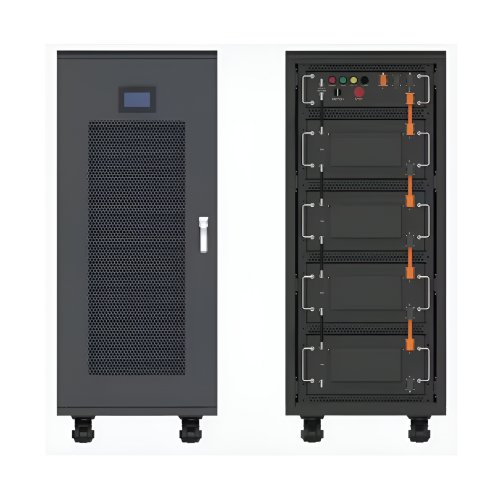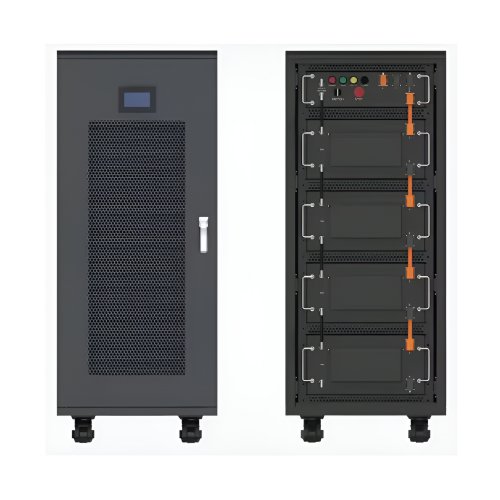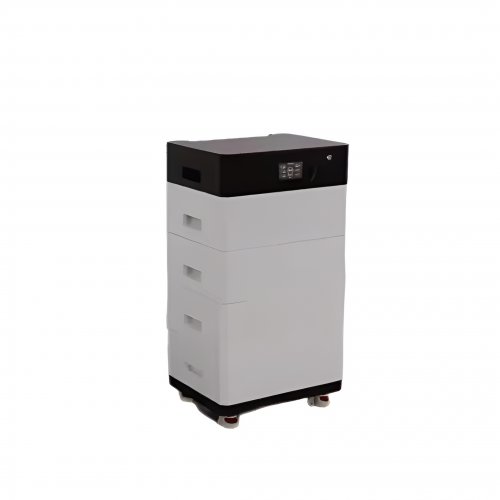Advances In Battery Safety: Mitigating Thermal Runaway Through Material Innovation And Smart Management Systems
The ubiquitous integration of lithium-ion batteries (LIBs) into electric vehicles (EVs), grid storage, and consumer electronics has placed battery safety at the forefront of electrochemical energy storage research. The primary safety concern remains thermal runaway (TR), a catastrophic, self-sustaining chain reaction initiated by internal short circuits, mechanical abuse, or operational extremes, leading to fire and explosion. Recent scientific endeavours have focused on a multi-faceted approach to mitigate this risk, spanning intrinsic material modifications, advanced diagnostics, and extrinsic engineering controls.
Intrinsic Material Innovations: Building Safer Chemistries from Within
A significant thrust of recent research aims to develop inherently safer electrode and electrolyte materials to prevent TR initiation. For cathodes, the instability of high-energy-density nickel-rich layered oxides (e.g., NMC811) at elevated temperatures is a critical issue. Advances include surface coating with inert oxides (e.g., Al2O3, ZrO2) and lattice-doping to enhance structural integrity and suppress oxygen release, a key exothermic reaction that fuels TR (Li et al., 2022). The development of single-crystal cathode particles, as opposed to polycrystalline ones, reduces grain boundaries, minimizing surface area and mitigating crack formation and parasitic reactions, thereby enhancing thermal stability.
The electrolyte, a flammable organic carbonate solvent, is a major fuel source in TR. Solid-state batteries (SSBs) represent the most promising paradigm shift, replacing liquid electrolytes with non-flammable solid counterparts (e.g., sulfides, oxides, polymers). Recent breakthroughs involve engineering stable interfaces between solid electrolytes and electrodes to prevent lithium dendrite growth and reduce interfacial resistance, a longstanding challenge for SSBs (Cheng et al., 2023). For conventional liquid systems, research on "non-flammable" or "fire-retardant" electrolytes has advanced. These formulations incorporate additives like organophosphates, fluorinated solvents, or high-concentration salts, which either create a stable passivation layer on electrodes or simply will not ignite, effectively starving the TR process of its fuel.
Separator technology has also evolved beyond simple porous membranes. The widespread adoption of ceramic-coated separators (e.g., with Al2O3 or SiO2) improves mechanical strength and thermal shutdown performance. The latest innovation involves "smart" separators with built-in thermal responsiveness. These separators incorporate materials with a positive temperature coefficient (PTC) that sharply increase resistance upon overheating, effectively shutting down ion flow before a short circuit can occur.
Extrinsic Management and Early Detection: The Role of Smart Systems
While intrinsic improvements are crucial, extrinsic battery management systems (BMS) form the critical second line of defense. The next generation of BMS is evolving from simple voltage and temperature monitors into predictive, intelligent platforms. Advanced algorithms now incorporate models based on electrochemical impedance spectroscopy (EIS) to detect subtle changes in internal resistance, which can signal the onset of lithium plating or micro-shorts long before they escalate (Mamadjonov et al., 2023).
Furthermore, the integration of multi-sensor data fusion is a key trend. By correlating data from temperature, voltage, pressure, and even acoustic or gas sensors within the battery pack, AI-driven BMS can more accurately diagnose internal faults and predict thermal events with greater lead time. The implementation of digital twin technology—creating a virtual, real-time replica of a physical battery—allows for continuous simulation and stress testing under various scenarios, enabling predictive maintenance and safety warnings.
Advanced Thermal Management and Failure Containment
Once a TR is initiated, containing its propagation within a multi-cell module is critical. Research in thermal barrier materials and module design has intensified. New phase-change materials (PCMs) that absorb immense heat during melting are being integrated into pack designs. More advanced solutions involve intumescent materials that expand dramatically when heated, forming an insulating char that physically and thermally isolates a failing cell from its neighbours, effectively quenching propagation (Wu et al., 2022). Novel cell-to-pack (CTP) and cell-to-chassis (CTC) architectures are also being designed with thermal propagation barriers and optimized cooling channels as integral safety features.
Future Outlook and Challenges
The future trajectory of battery safety is one of convergence. The ultimate goal is the development of a "fail-safe" battery that combines inherently stable materials with an intelligent, prognostic management system. Key challenges remain. For SSBs, scaling production, reducing cost, and彻底 solving interfacial instability are paramount. For smart BMS, reducing the computational burden and validating prognostic algorithms across diverse real-world conditions are critical next steps.
Furthermore, the safety of recycling processes and the second-life application of retired EV batteries present a new frontier for safety research, requiring diagnostics to assess the safety of aged and heterogeneous cells. Standardization of safety testing protocols, especially for new chemistries like sodium-ion and solid-state, will be essential to ensure comparative and rigorous evaluation.
In conclusion, the advances in battery safety are comprehensive, addressing the problem from the atomic scale of material interfaces to the system level of intelligent control. While the pursuit of higher energy density continues, it is now inextricably linked with the imperative of safety. The synergy between new chemistry, smart engineering, and artificial intelligence is paving the way for an energy future that is not only powerful and sustainable but also fundamentally safe.
References:Cheng, X.-B., Zhang, R., Zhao, C.-Z., & Zhang, Q. (2023). Toward Safe Lithium Metal Anode in Rechargeable Batteries: A Review.Chemical Reviews, 123(5), 2543-2574.Li, W., Lee, S., & Manthiram, A. (2022). High-Nickel NMA: A Cobalt-Free Alternative to NMC and NCA Cathodes for Lithium-Ion Batteries.Advanced Materials, 34(23), 2108784.Mamadjonov, M., Kim, T., & Cho, J. (2023). Early Detection of Internal Short Circuits in Lithium-Ion Batteries using Nonlinear Frequency Response Analysis.Journal of Power Sources, 558, 232582.Wu, Y., et al. (2022). An Intumescent Flame-Retardant Layer for Suppressing Thermal Runaway in Lithium-Ion Batteries.Advanced Functional Materials, 32(18), 2111286.
Customized/OEM/ODM Service
HomSolar Supports Lifepo4 battery pack customization/OEM/ODM service, welcome to contact us and tell us your needs.


HomSolar: Your One-stop LiFePO4 Battery Pack & ESS Solution Manufacturer
Our line of LiFePO4 (LFP) batteries offer a solution to demanding applications that require a lighter weight, longer life, and higher capacity battery. Features include advanced battery management systems (BMS), Bluetooth® communication and active intelligent monitoring.

Customised Lithium Iron Phosphate Battery Casing
ABS plastic housing, aluminium housing, stainless steel housing and iron housing are available, and can also be designed and customised according to your needs.

HomSolar Smart BMS
Intelligent Battery Management System for HomSolar Energy Storage System. Bluetooth, temperature sensor, LCD display, CAN interface, UART interface also available.


Terminals & Plugs Can Be Customized
A wide range of terminals and plugs can be customised to suit the application needs of your battery products.

Well-designed Solutions for Energy Storage Systems
We will design the perfect energy storage system solution according to your needs, so that you can easily solve the specific industry applications of battery products.



About Our Battery Cells
Our energy storage system products use brand new grade A LiFePO4 cells with a battery lifespan of more than 4,000 charge/discharge cycles.



Applications in Different Industries
We supply customized & OEM battery pack, assemble cells with wiring, fuse and plastic cover, all the cell wires connected to PCB plug or built BMS.
Applications: E-bike, Electric Scooter, Golf Carts, RV, Electric Wheelchair, Electric Tools, Robot Cleaner, Robot Sweeper, Solar Energy Storage System, Emergency Light, Solar Power Light, Medical Equipment, UPS Backup Power Supply.
We can provide you with customized services. We have the ability to provide a vertical supply chain, from single cells to pack/module and to a complete power solution with BMS, etc.


HomSolar (Shenzhen) Technology Co., Ltd
























